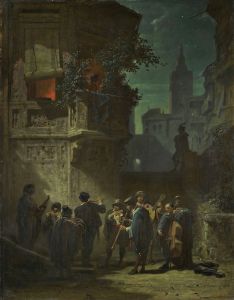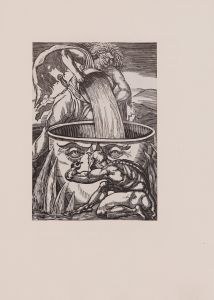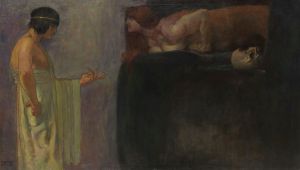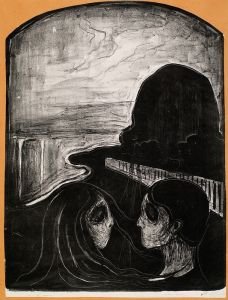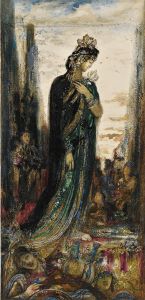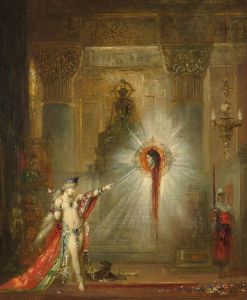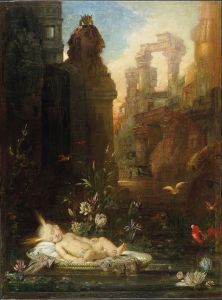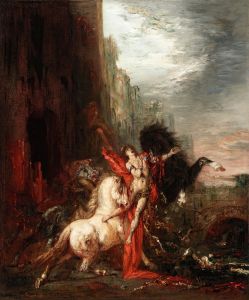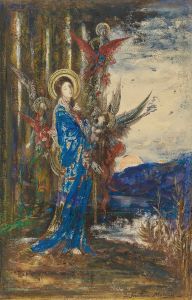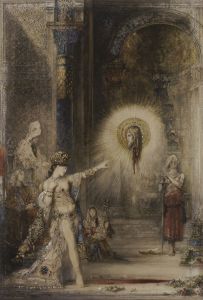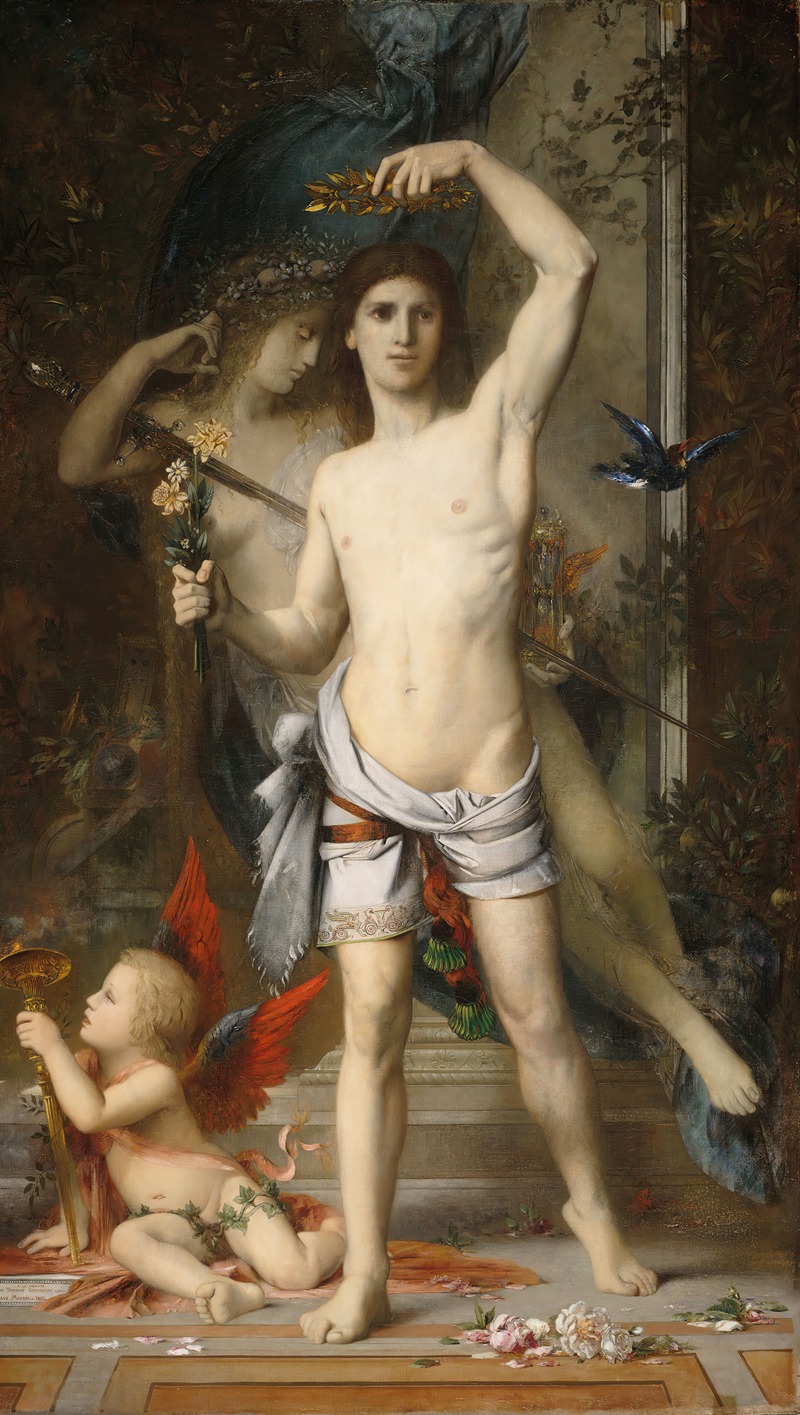
The Young Man And Death
A hand-painted replica of Gustave Moreau’s masterpiece The Young Man And Death, meticulously crafted by professional artists to capture the true essence of the original. Each piece is created with museum-quality canvas and rare mineral pigments, carefully painted by experienced artists with delicate brushstrokes and rich, layered colors to perfectly recreate the texture of the original artwork. Unlike machine-printed reproductions, this hand-painted version brings the painting to life, infused with the artist’s emotions and skill in every stroke. Whether for personal collection or home decoration, it instantly elevates the artistic atmosphere of any space.
"The Young Man and Death" is a painting by the French Symbolist artist Gustave Moreau. Moreau, born in 1826 and deceased in 1898, was known for his intricate and highly detailed works that often drew on mythological and biblical themes. His style is characterized by a rich use of color and a penchant for the fantastical and the allegorical.
"The Young Man and Death" is one of Moreau's lesser-known works, and specific details about its creation, such as the exact year it was painted, are not well-documented. The painting depicts a poignant and dramatic scene, typical of Moreau's fascination with the themes of mortality and the human condition.
In the painting, a young man is shown in a moment of confrontation with Death, who is often personified in art as a skeletal figure or a shadowy presence. Moreau's interpretation of Death may vary, but it typically involves a figure that embodies the inevitability and finality of death. The young man, in contrast, represents life, youth, and the transient nature of human existence.
Moreau's use of symbolism is evident in the composition and the elements within the painting. The juxtaposition of the young man and Death highlights the tension between life and death, a common theme in Moreau's work. The artist's meticulous attention to detail and his use of vibrant colors and intricate patterns add depth and complexity to the scene, inviting viewers to ponder the deeper meanings behind the imagery.
Gustave Moreau was a prominent figure in the Symbolist movement, which emerged in the late 19th century as a reaction against the realism and naturalism that dominated the art world at the time. Symbolist artists sought to express the emotional and spiritual aspects of human experience through symbolic and often dreamlike imagery. Moreau's work, including "The Young Man and Death," exemplifies this approach, using allegory and myth to explore profound and often unsettling themes.
Moreau's influence extended beyond his own work; he was also a respected teacher at the École des Beaux-Arts in Paris. Among his students were notable artists such as Henri Matisse and Georges Rouault, who would go on to make significant contributions to modern art.
While "The Young Man and Death" may not be as widely recognized as some of Moreau's other works, it remains an important example of his artistic vision and his ability to convey complex themes through his distinctive style. The painting reflects Moreau's deep engagement with the mysteries of life and death, and his skill in using art to explore the human psyche.
In summary, "The Young Man and Death" by Gustave Moreau is a compelling work that encapsulates the artist's Symbolist approach and his fascination with the themes of mortality and the human condition. Through his detailed and symbolic imagery, Moreau invites viewers to reflect on the transient nature of life and the inevitability of death, making this painting a poignant and thought-provoking piece within his oeuvre.






